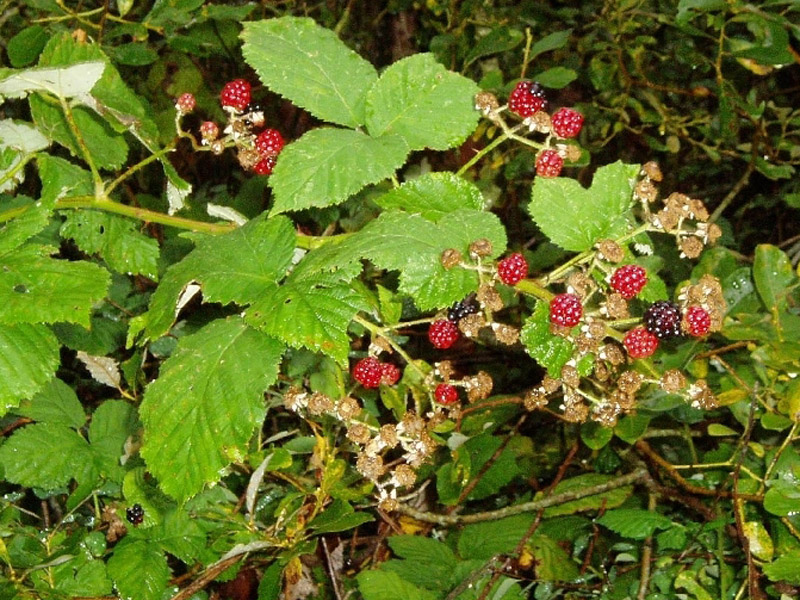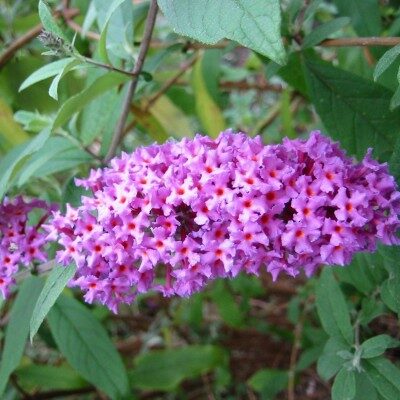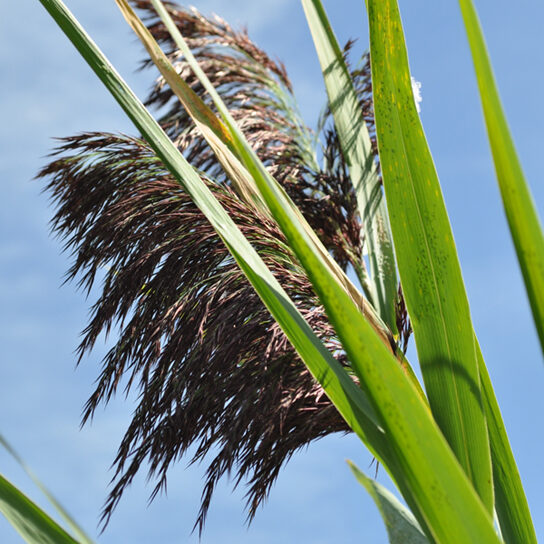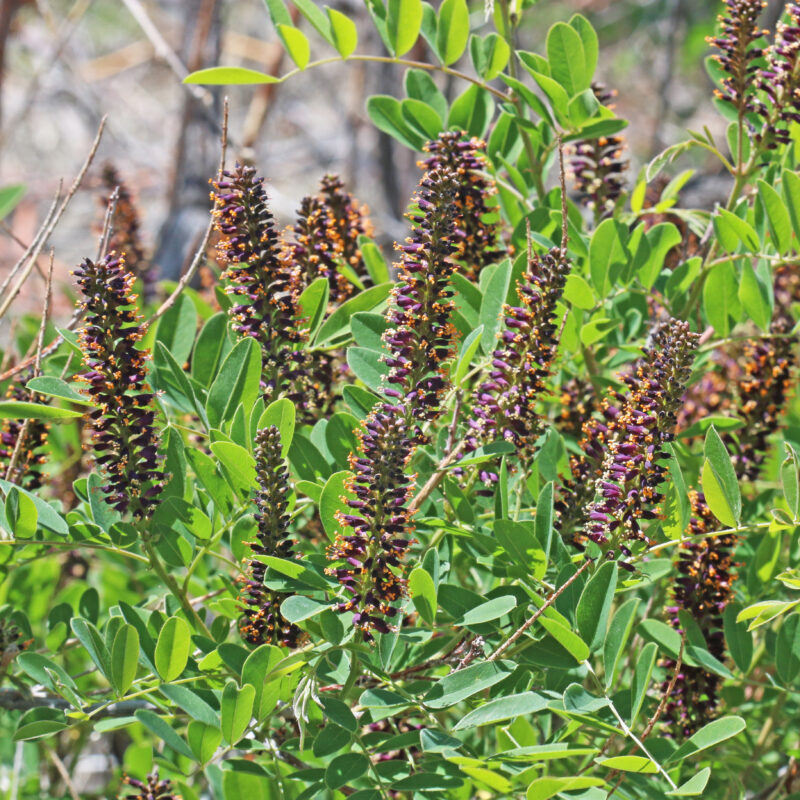Himalayan (or Armenian) blackberry (Rubus discolor, R. procerus, R. aremeniacus) is a perennial which blooms from June to August. Its root balls produce upright reddish stems or canes with sharp spines that can grow more than 20 feet per season. The leaves are serrated and the white-to-light pink flowers have five petals.
Himalayan/Armenian blackberry is the most widespread and disruptive of all the noxious weeds in Western Oregon. It displaces native species, dominates riparianRiparian areas The land alongside a creek, river, pond, or other body of water habitats, and costs millions of dollars to control in parks, right-of-ways, forests and agricultural areas. It reproduces by canes and seeds, the later of which is carried by birds and animals.
The best way to control blackberry is to cut it down to the ground and dig out the roots.
Read more about blackberry in this brochure.
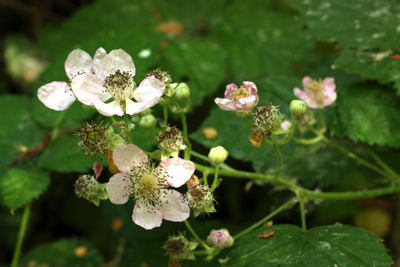
Alternative native plants are:
- Salmonberry
- Thimbleberry
- Thin-leaf huckleberry
- Snowberry
- Indian plum
